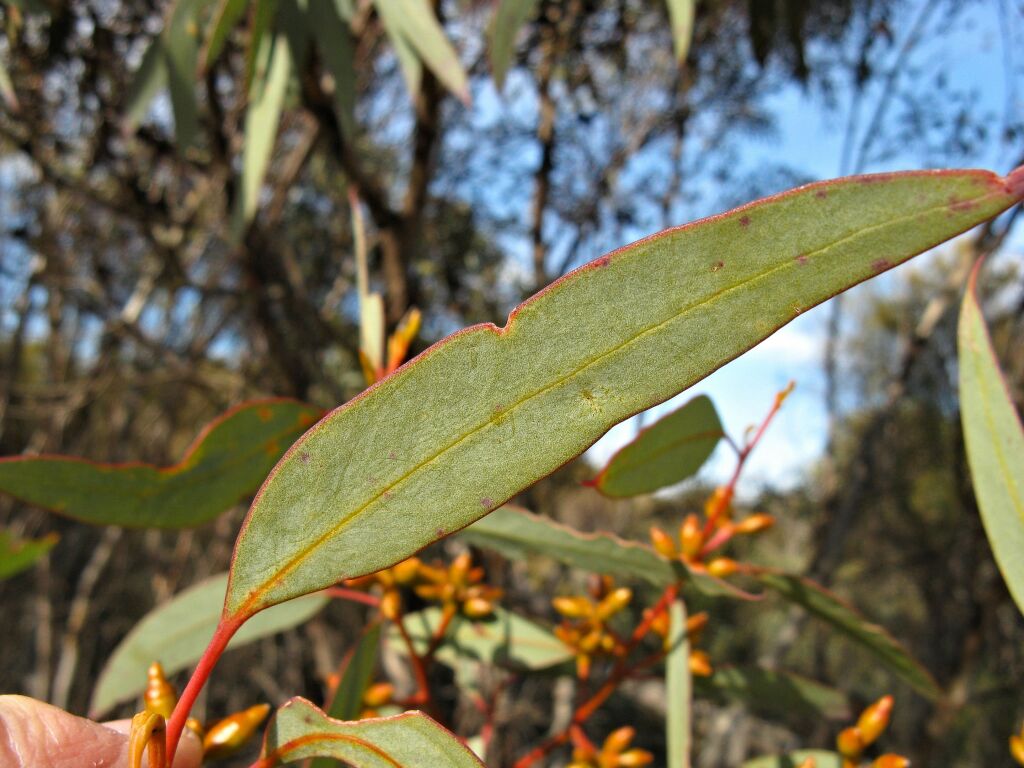Eucalyptus dumosa
A.Cunn. ex Oxley Dumosa MalleeMallee; bark smooth or rough and loose at base. Pith of branchlets glandular. Juvenile leaves petiolate, alternate, ovate, to 14 cm long, 6 cm wide, dull, green; adult leaves leaves petiolate, alternate, lanceolate, 6.5–14 cm long, 1–2 cm wide, concolorous, at first dull maturing slightly glossy, light green or grey; reticulation dense, with erose veinlets, oil glands numerous, mainly intersectional. Inflorescences axillary, unbranched; peduncles to 1.6 cm long, 7-flowered; buds shortly to distinctly pedicellate, oblong, to 1 cm long, 0.5 cm diam., scar present; operculum conical to slightly beaked; stamens inflexed; anthers dorsifixed, cuneate; ovules in 4 vertical rows; flowers white. Fruit shordy pedicellate, cupular to cylindric, to 0.9 cm long, 0.8 cm diam.; disc descending; valves 4, to rim level; seed lustrous ruby-red, flattish, with distinct, shallow reticulum, hilum ventral. Flowers Oct.–May.
LoM, MuM, Wim, VRiv, MSB, RobP, MuF, Gold, GGr. Also SA, NSW. In Victoria west of Swan Hill, Wycheproof to the Sunset Country, Big Desert, Little Desert and Mt Arapiles. Usually on heavier soils than other mallees.
Some populations have grey adult leaves that remain dull, and are similar to forms found north-east of Mildura in New South Wales. Eucalyptus dumosa is close to E. phenax which has glossier leaves and more or less sessile buds and fruit.
A single plant known from north of Nhill shares features with Eucalyptus dumosa and E. phenax, but is distinguished by its bluish, sublustrous adult leaves, ovoid, subsessile buds with a faintly ribbed operculum that is slightly narrower than the hypanthium at the abscission line, and slightly smaller, globose-truncate fruits. Possibly of hybrid origin between the two above-mentioned species.
Brooker, M.I.H.; Slee, A.V. (1996). Eucalyptus. In: Walsh, N.G.; Entwisle, T.J., Flora of Victoria Vol. 3, Dicotyledons Winteraceae to Myrtaceae, pp. 946–1009. Inkata Press, Melbourne.
 Spinning
Spinning


